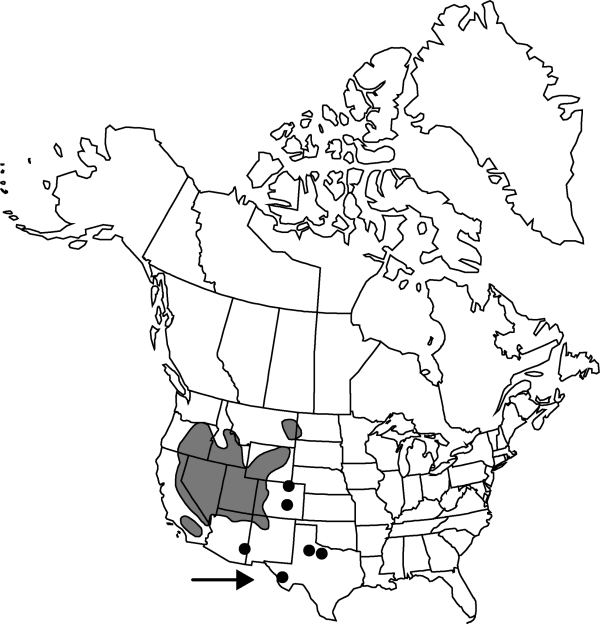Atriplex confertifolia
Proc. Amer. Acad. Arts 9: 119. 1874.
Shrubs, dioecious, 3–8 dm, spinescent. Leaves persistent, alternate; petiole 1–4 mm; blade orbiculate to ovate, elliptic, or oval, 9–25 (–45) × 4–20 (–25) mm, margin entire, apex obtuse. Staminate flowers yellow, in clusters 2–4 mm wide or in spikes to 1 cm, axillary, in foliose-bracteate, divaricately branched panicles 3–15 cm. Pistillate flowers in similar paniculate inflorescences. Fruiting bracteoles sessile or subsessile, suborbiculate to rhombic or elliptic, 4–12 mm and wide, body indurate, terminal teeth distinct, foliaceous, shorter than bracteoles, entire or toothed below, terminal teeth spreading at maturity, faces smooth, lacking appendages. Seeds 1.5–2 mm wide. 2n = 18, 36, 54+.
Phenology: Flowering spring–fall.
Habitat: Gravelly to fine-textured soils in greasewood, mat-atriplex, other salt desert shrub, sagebrush, pinyon-juniper, and ponderosa pine communities
Elevation: 600-2200 m
Distribution

Ariz., Calif., Colo., Idaho, Mont., Nev., N.Mex., N.Dak., Oreg., Tex., Utah, Wyo.
Discussion
Shadscale forms hybrids with Atriplex canescens, A. garrettii, A. corrugata, and A. gardneri varieties. It is, however, closely allied to A. parryi and A. spinifera. The plants are widely dispersed, typically on saline substrates but less commonly on essentially non-saline ones, through large areas of the western United States and adjacent Canada and Mexico, on both raw and exposed geological strata and on alluvium.
Selected References
None.
Lower Taxa
No values specified."wide" is not a number.